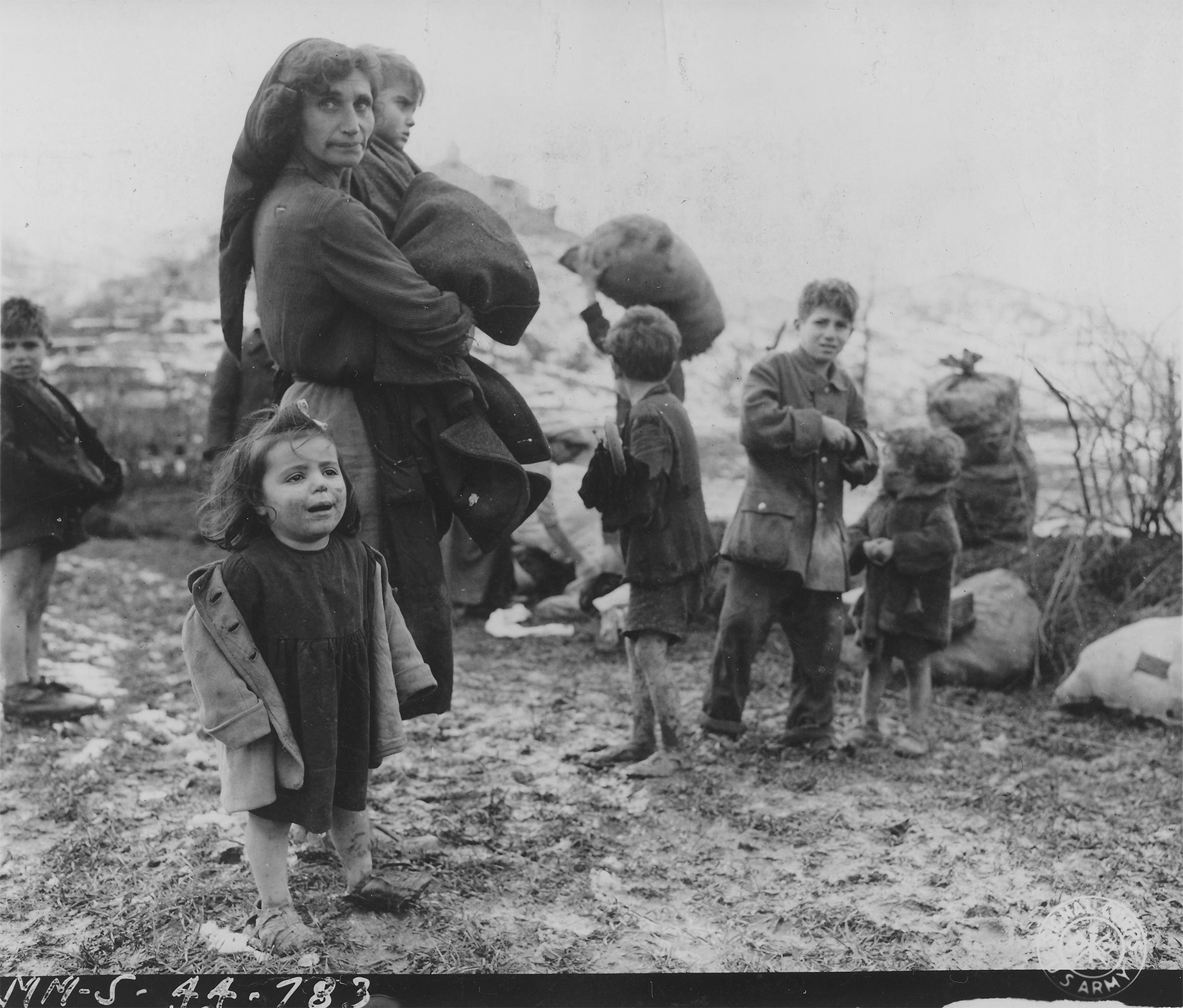
Photo: Civilians near the town of Acquafondata (FR)
Historical iconography by Associazione Linea Gustav.
Source: National Archives Washington D.C.
THE WAR OF THE ITALIANS: THE CIVILIANS
19 July 1943. The enthusiastic reactions to Italy’s entry into the war are immediately dampened, and the population of the Cassinate is in
for a rude awakening. It is a blow to the Valle del Liri: the military
airport in Aquino, a high-value target occupied by the German Air
Force, is destroyed after a violent bombardment. On the same day, the
Tiburtina, San Lorenzo, and Prenestina districts in Rome are also
bombed. The peace in the Terra Sancti Benediciti is violated. Some
months later, at the end of November, the war reaches the area of the
Alto Casertano, along the Winter Line, in the corridor of Mignano
Monte Lungo.
That is the Gate to the Liri Valley, a millenary southern entry to the
Valle del Liri, the preferential way to Rome through the ancient
consular road, the Via Casilina. In this connection, the redemption of a
part of the country finds expression in the Primo Raggruppamento
Motorizzato, who fights alongside the Allies. It is the first time since
the Armistice of 8 September 1943.
Between the devil and the deep sea, the life of the civilians — men
escaped from continuous roundups, women, children and elderly that
haven’t respected the displacement order issued by the German
command — is surrounded by an iron grip. For the first time since the
beginning of the conflict, destruction, fear, deprivation, hunger,
illness, and death spread among the population.
The civilians hope for a quick Allies’ intervention in order to return to
the quiet that preceded the storm, but days, weeks, and months are
marked by the destructive fury of the war, deaf and indifferent to
human suffering. The inhabitants are forced to live in extreme
hardship, often in makeshift shelters like damp and dark caves, facing
not only the intransigence of the soldiers but also the voracity of the
insects that literally infest them. On the mountains and in the valleys
where the battles take place, maimed and bare trees look like lifeless
sculptures imploring mercy.
The spring of 1944 arrives, and while during the long and harsh winter
the occupants committed terrible atrocities, like the massacre of
Collelungo in Cardito di Vallerotonda, and maintained the order with
intransigent discipline, the plague of the so-called Marocchinate
arrives with the liberators. The sign of its merciless passage indelibly
marks the villages of the region and characterizes one of the worst
periods for human civilization.